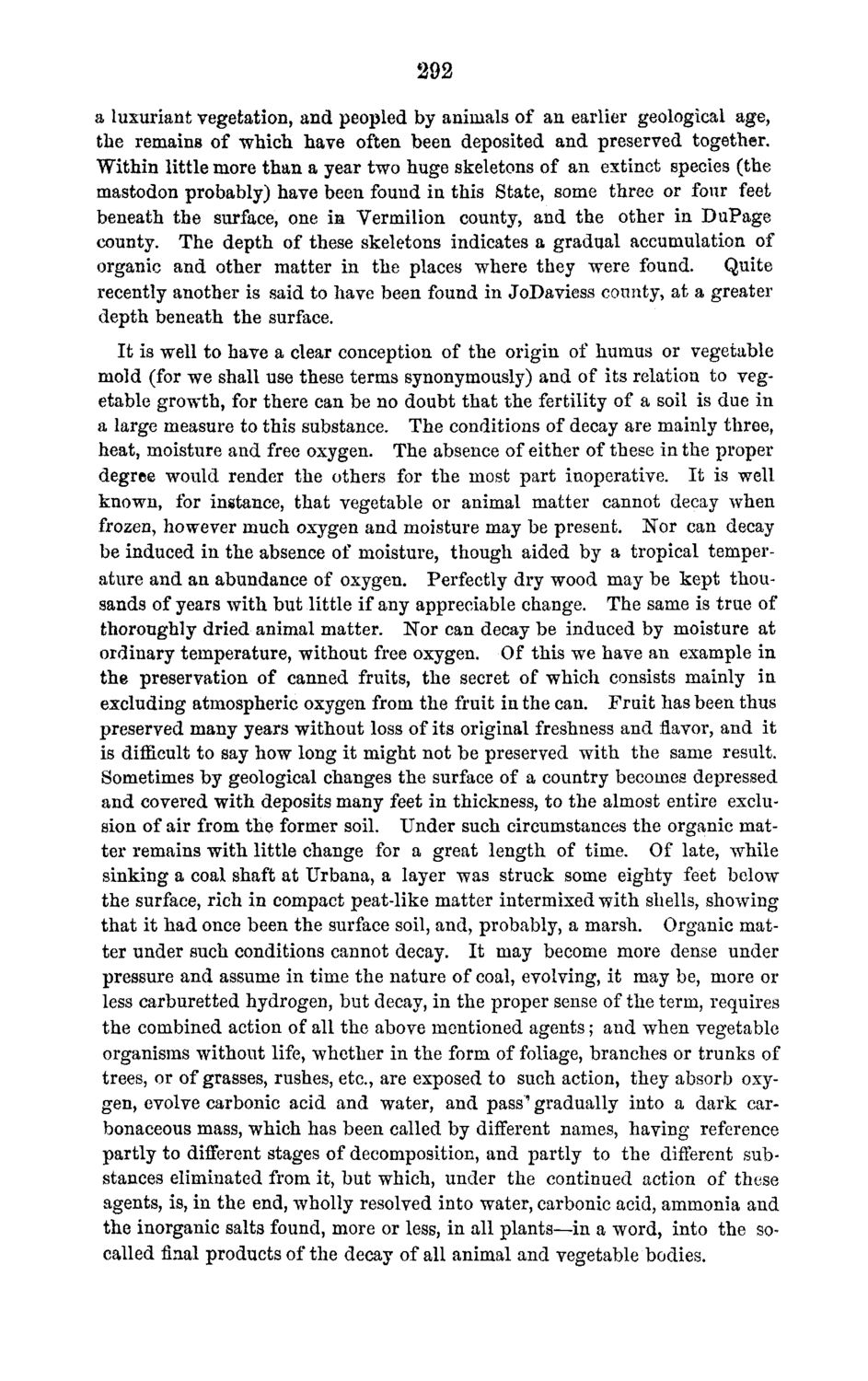| |
| |
Caption: Board of Trustees Minutes - 1870
This is a reduced-resolution page image for fast online browsing.

EXTRACTED TEXT FROM PAGE:
292 a luxuriant vegetation, and peopled by animals of an earlier geological age, the remains of which have often been deposited and preserved together. Within little more than a year two huge skeletons of an extinct species (the mastodon probably) have been found in this State, some three or four feet beneath the surface, one in Vermilion county, and the other in DuPage county. The depth of these skeletons indicates a gradual accumulation of organic and other matter in the places where they were found. Quite recently another is said to have been found in JoDaviess county, at a greater depth beneath the surface. It is well to have a clear conception of the origin of humus or vegetable mold (for we shall use these terms synonymously) and of its relation to vegetable growth, for there can be no doubt that the fertility of a soil is due in a large measure to this substance. The conditions of decay are mainly three, heat, moisture and free oxygen. The absence of either of these in the proper degree would render the others for the most part inoperative. It is well known, for instance, that vegetable or animal matter cannot decay when frozen, however much oxygen and moisture may be present. Nor can decay be induced in the absence of moisture, though aided by a tropical temperature and an abundance of oxygen. Perfectly dry wood may be kept thousands of years with but little if any appreciable change. The same is true of thoroughly dried animal matter. Nor can decay be induced by moisture at ordinary temperature, without free oxygen. Of this we have an example in the preservation of canned fruits, the secret of which consists mainly in excluding atmospheric oxygen from the fruit in the can. Fruit has been thus preserved many years without loss of its original freshness and flavor, and it is difficult to say how long it might not be preserved with the same result. Sometimes by geological changes the surface of a country becomes depressed and covered with deposits many feet in thickness, to the almost entire exclusion of air from the former soil. Under such circumstances the organic matter remains with little change for a great length of time. Of late, while sinking a coal shaft at Urbana, a layer was struck some eighty feet below the surface, rich in compact peat-like matter intermixed with shells, showing that it had once been the surface soil, and, probably, a marsh. Organic matter under such conditions cannot decay. It may become more dense under pressure and assume in time the nature of coal, evolving, it may be, more or less carburetted hydrogen, but decay, in the proper sense of the term, requires the combined action of all the above mentioned agents; and when vegetable organisms without life, whether in the form of foliage, branches or trunks of trees, or of grasses, rushes, etc., are exposed to such action, they absorb oxygen, evolve carbonic acid and water, and pass1 gradually into a dark carbonaceous mass, which has been called by different names, having reference partly to different stages of decomposition, and partly to the different substances eliminated from it, but which, under the continued action of these agents, is, in the end, wholly resolved into water, carbonic acid, ammonia and the inorganic salts found, more or less, in all plants—in a word, into the socalled final products of the decay of all animal and vegetable bodies.
| |